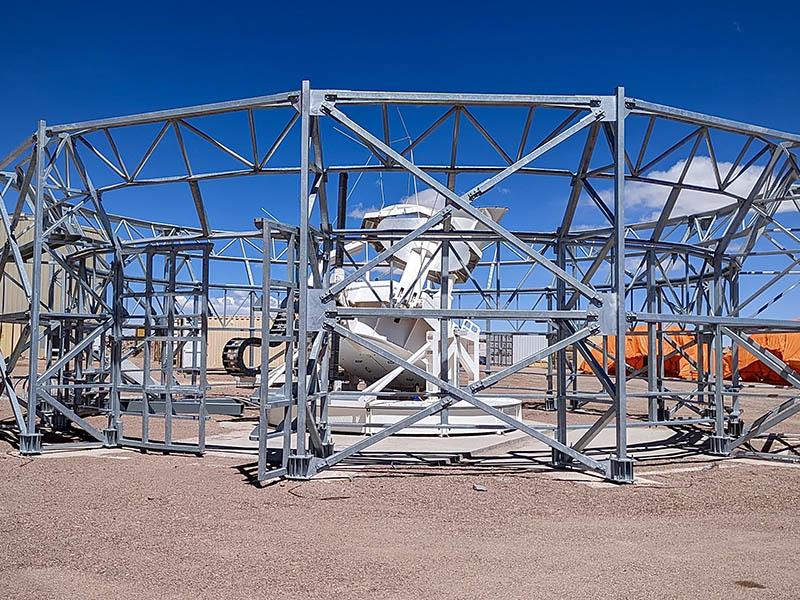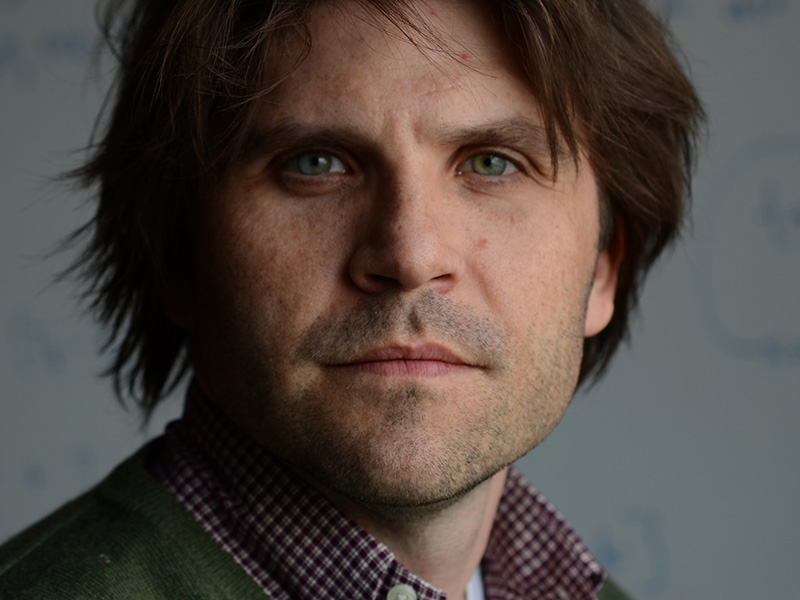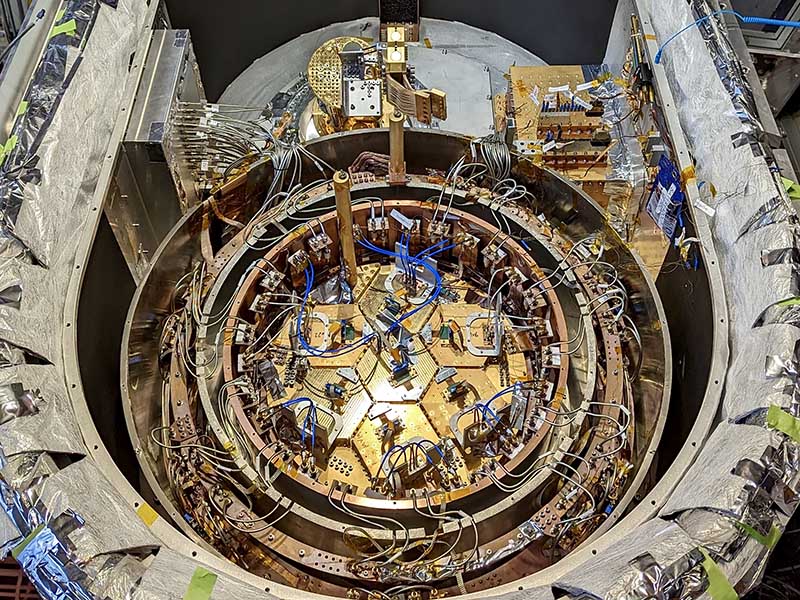NSF Grant Will Fund Astronomer in Search of the Origins of the Universe

The night sky is full of clues about the origins of our universe; the challenge is developing technology sensitive enough to see them. Because light from far away sources takes a long time to travel across the immense distances of space, it carries pictures of the universe that reach back to the moment of its creation, and with the help of a $52.7 million grant from the National Science Foundation to the Simons Observatory, astronomers like UVA’s Bradley Johnson are working to develop instruments that could help us see those pictures and could give us a window into very beginning of time.
Even if you were to look through the world’s most powerful telescope, much of what you would see in the universe would be empty space. The reason we see only black is that our eyes are only capable of seeing certain wavelengths of light, but other wavelengths of light like x-rays and radio waves are capable of providing us with detailed information about what was happening in the universe’s past.
“There’s stuff out there all over the place to be observed; you just can’t see it with your eyes, so it looks like there’s nothing,” said cosmologist Bradley Johnson, an assistant professor of astronomy with College and Graduate School of Arts & Sciences’ Department of Astronomy.

As a cosmologist, Johnson studies cosmic microwave background radiation to understand what it can tell us about how the universe was formed and how it has evolved. His research program is focused on building innovative new camera systems and telescopes that will allow astronomers to uncover pictures of the sky contained in wavelengths of light that can’t be seen.
One of the challenges astronomers face in observing those images is that the earth’s atmosphere emits wavelengths that can overwhelm the cosmological signals they’re trying to observe. Space-based telescopes are one solution to the problem, but they can cost billions of dollars to build and operate, and existing space-based instruments aren’t looking at the microwave radiation that’s essential to understanding the universe’s origins.
To overcome some of the disadvantages of terrestrial observatories, the Simons Foundation, a nonprofit dedicated to the advancement of research in science and mathematics, provided the initial funding in 2019 to build the Simons Observatory on the stratovolcano Cerro Toco, 17,000 feet above Chile’s Atacama Desert. The remote location minimizes light pollution that could interfere with observations, and the altitude of the site, which helps minimize atmospheric interference, is so high that astronomers have to wear oxygen masks.
Additional funding from the National Science Foundation in the form of a Mid-Scale Research Infrastructure-2 grant of nearly $53 million awarded this spring will expand that work. The grant will provide a major infrastructure upgrade for the newly dubbed, “Advanced Simons Observatory,” funding 30,000 additional radio frequency detectors, a new data pipeline that will double the mapping speed of the observatory’s Large Aperture Telescope and set a new standard for green observatories at remote sites by funding a massive photovoltaic array that will supply up to 70 percent of the site’s power with solar energy, saving up to 2 million kilograms of carbon dioxide emissions each year.
The grant will also support the work of approximately 300 scientists, engineers and researchers from more than 35 research institutions, making it one of the world’s largest cosmology collaborations. The grant will also support Johnson and his students, funding graduate research and travel to one of the world’s most advanced astronomical observatories for the next ten years.
In addition to his work as a cosmologist, Johnson, whose expertise includes developing advanced instrumentation to solve unique challenges in astronomy, will work with UVA machinist Peter Dow to build extremely sensitive detector modules that are critical to the success of the observatory’s work.
To detect the extremely faint signals left billions of years ago, the observatory’s camera system needs to be cooled to a point at which the system’s own heat won’t interfere with the images it’s trying to capture, so Johnson is building superconducting detector systems that only function at a temperature of close to absolute zero, which poses a variety of challenges in superconductor physics that could lead to breakthroughs in both astronomical observation and quantum computing.

“Nobody’s ever done this before,” Johnson said. “In fact, there’s a long list of things nobody’s ever done before, and you have to be successful at every step. But it’s really exciting. It’s a fire hose of challenges, but I love it.”
If he’s successful, the payoff will be huge.
“These are really small signals. They’re cosmological artifacts from the first fraction of a second after the universe began,” Johnson said. “You talk about looking for dinosaur bones…that was a hundred million years ago or so. This is 13.8 billion years ago. We’re doing our archaeology on the universe, and we’re finding actual fingerprints from its very beginnings, and that’s something I’m really excited about.”
“The theoretical prediction and later detection of the universe’s cosmic microwave background were one of the triumphs of science in the last century,” said Phil Arras, chair of UVA’s Department of Astronomy. “Ongoing observations of the cosmic microwave background give us insight to the universe when it was much younger and provide data to test against our theories of physics and cosmology. Professor Brad Johnson’s instrumentation program now allows UVA to contribute to the next generation of the project, which is the search for evidence of the early “inflationary era” of expansion of the universe.”
“UVA is very proud of Professor Johnson and his research group as they seek faint remnants of events that took place eons ago. They’re pondering the origin of the universe. Thanks to the support of the Simons Foundation and this enormous NSF grant that supports this pursuit, his team is part of what is perhaps the largest collaboration of cosmologists in the history of science,” said Ken Ono, Marvin Rosenblum Professor of Mathematics and STEM adviser to the provost at UVA.
We’re here to answer your questions! Contact us today.







